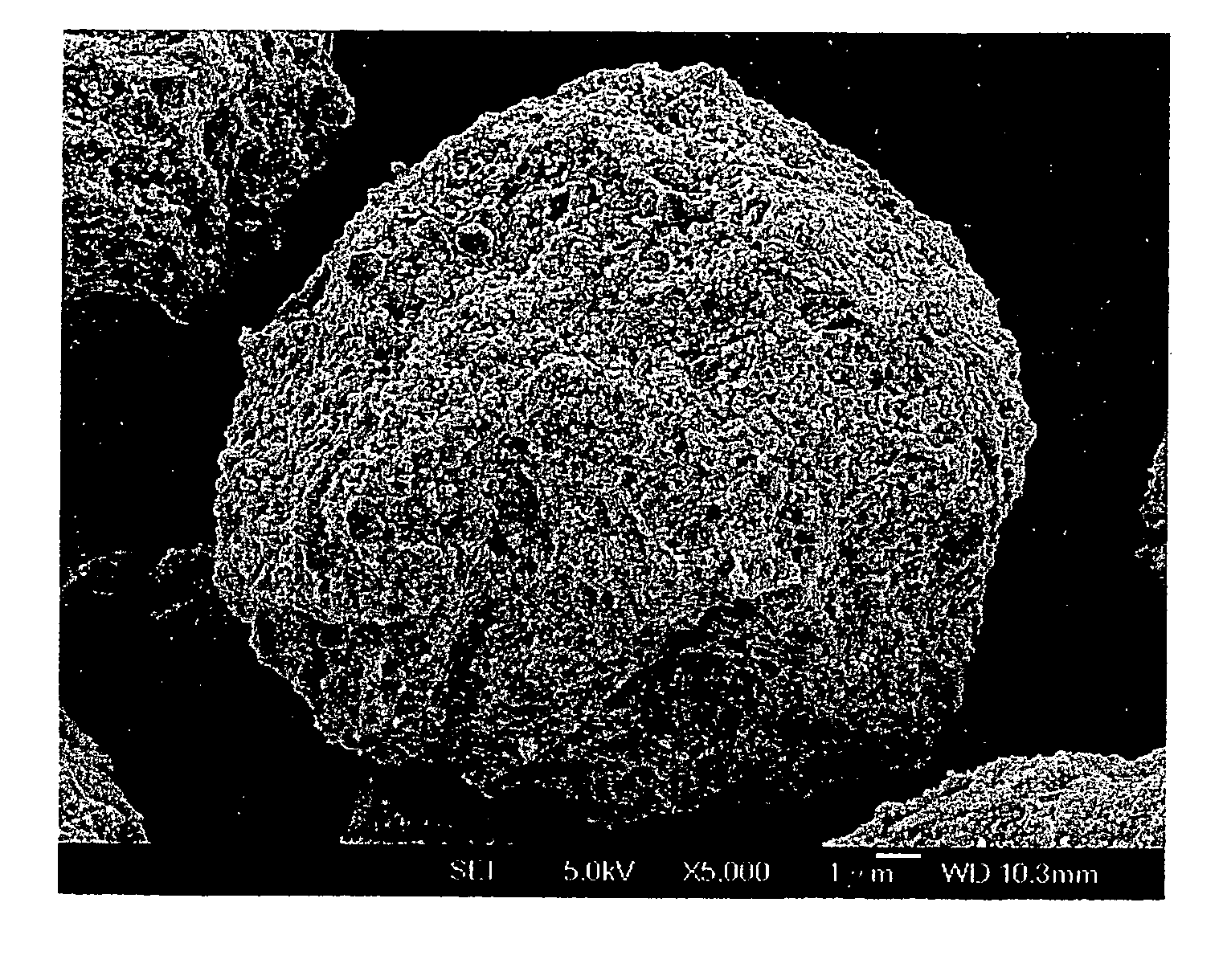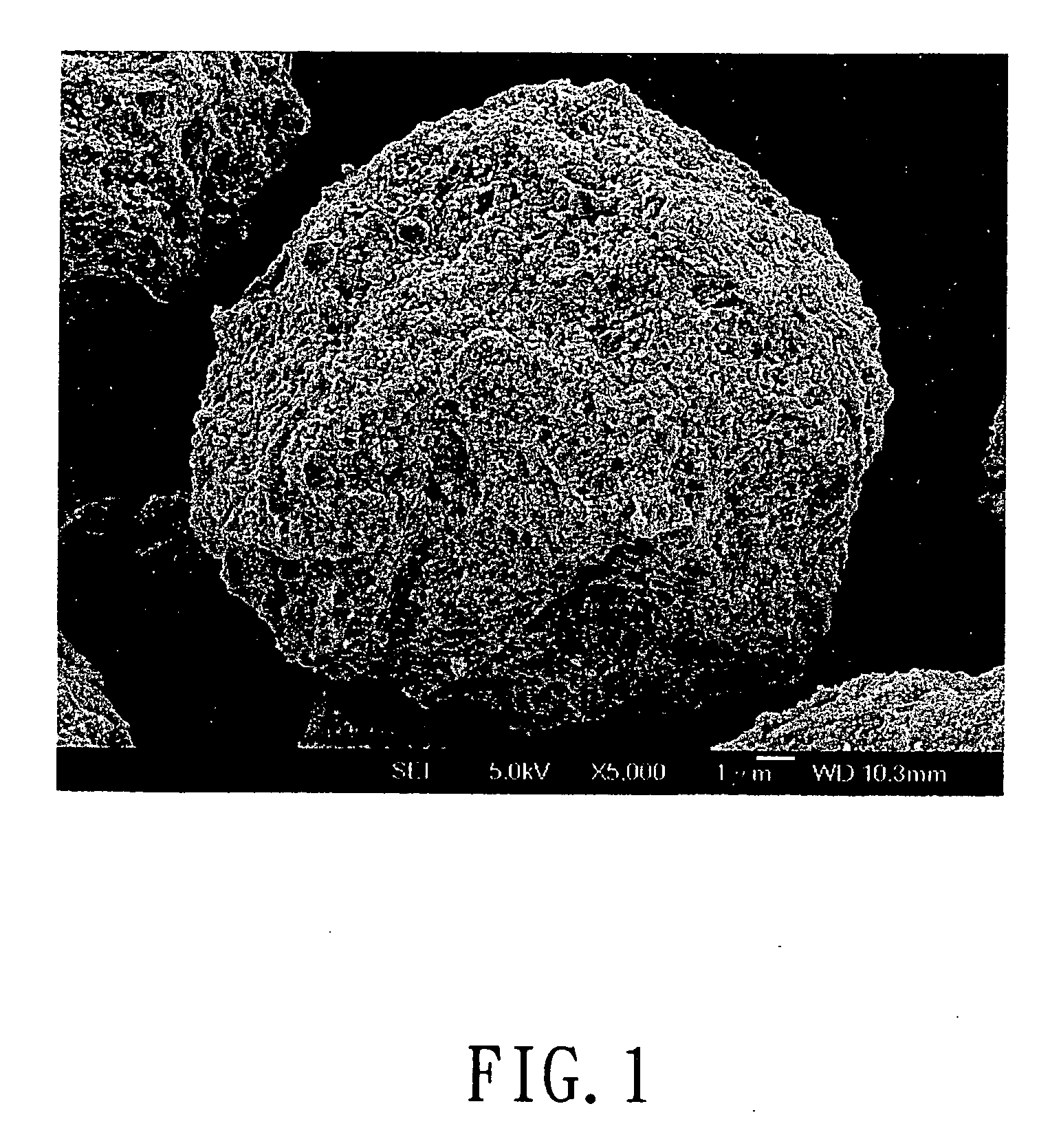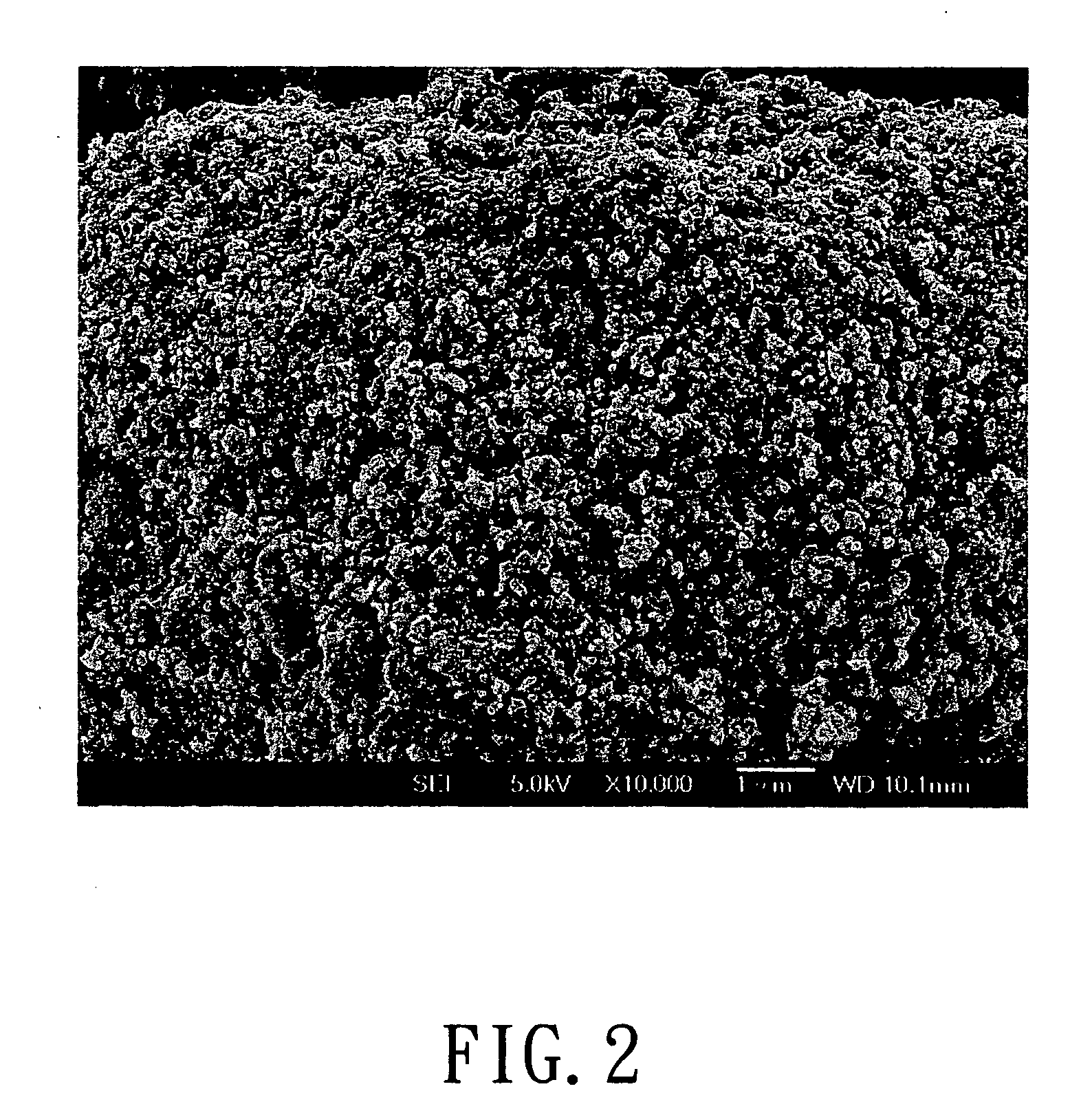Cathode material for manufacturing a rechargeable battery
- Summary
- Abstract
- Description
- Claims
- Application Information
AI Technical Summary
Problems solved by technology
Method used
Image
Examples
example
Analytical Equipment
[0040] 1. Scanning Electron Microscope (SEM): Hitachi model S-3500V. [0041] 2. Particle size distribution analyzer: Horiba, LA-910. [0042] 3. Charge / discharge cycle tester: Maccor Series 4000 and 3200 Automated Test Systems (Maccor Inc., Tulsa, Okla., U.S.A) [0043] 4. Accelerated surface and porosimetry system: ASAP 2010 (Micromeritics, U.S.A.)
example a
[0044] 0.2 mole of ferric nitrate (Fe(NO3)3) was added into 200 ml of deionized water. After Fe(NO3)3 was completely dissolved in the deionized water, 0.2 moles of phosphoric acid and 100 ml of 2N lithium hydroxide(LiOH) solution were added in sequence, so as to form a mixture having a stoichiometric ratio 1:1:1 of Fe3+:Li+:PO43+. 100 ml of 0.252 goxalic acid solution was added to the mixture having Fe3+, Li+, and PO43+ ions. The reactant solution thus formed was dried to form particulate precursors of LiFePO4-based metal compound. Next, the particulate precursors were placed in an aluminum oxide crucible. The crucible together with charcoal was placed in a tubular furnace which was heated at 700° C. for 12 hours in the presence of an argon carrier gas flowing into the furnace. Carbon particles formed from the charcoal were suspended in the argon carrier gas and were mixed with the micro-particulate precursors, thereby crystallizing the metal compound of each of the particulate prec...
example b
[0045] In this example, the powdered cathode material includes micrometer-sized secondary particles, each of which is composed of nanometer-sized primary particles, was prepared in a manner similar to that of Example A, except that 0.2 mole of Fe (NO3)3 was replaced with 0.2 mole of ferric chloride (FeCl3).
PUM
 Login to View More
Login to View More Abstract
Description
Claims
Application Information
 Login to View More
Login to View More - R&D
- Intellectual Property
- Life Sciences
- Materials
- Tech Scout
- Unparalleled Data Quality
- Higher Quality Content
- 60% Fewer Hallucinations
Browse by: Latest US Patents, China's latest patents, Technical Efficacy Thesaurus, Application Domain, Technology Topic, Popular Technical Reports.
© 2025 PatSnap. All rights reserved.Legal|Privacy policy|Modern Slavery Act Transparency Statement|Sitemap|About US| Contact US: help@patsnap.com



